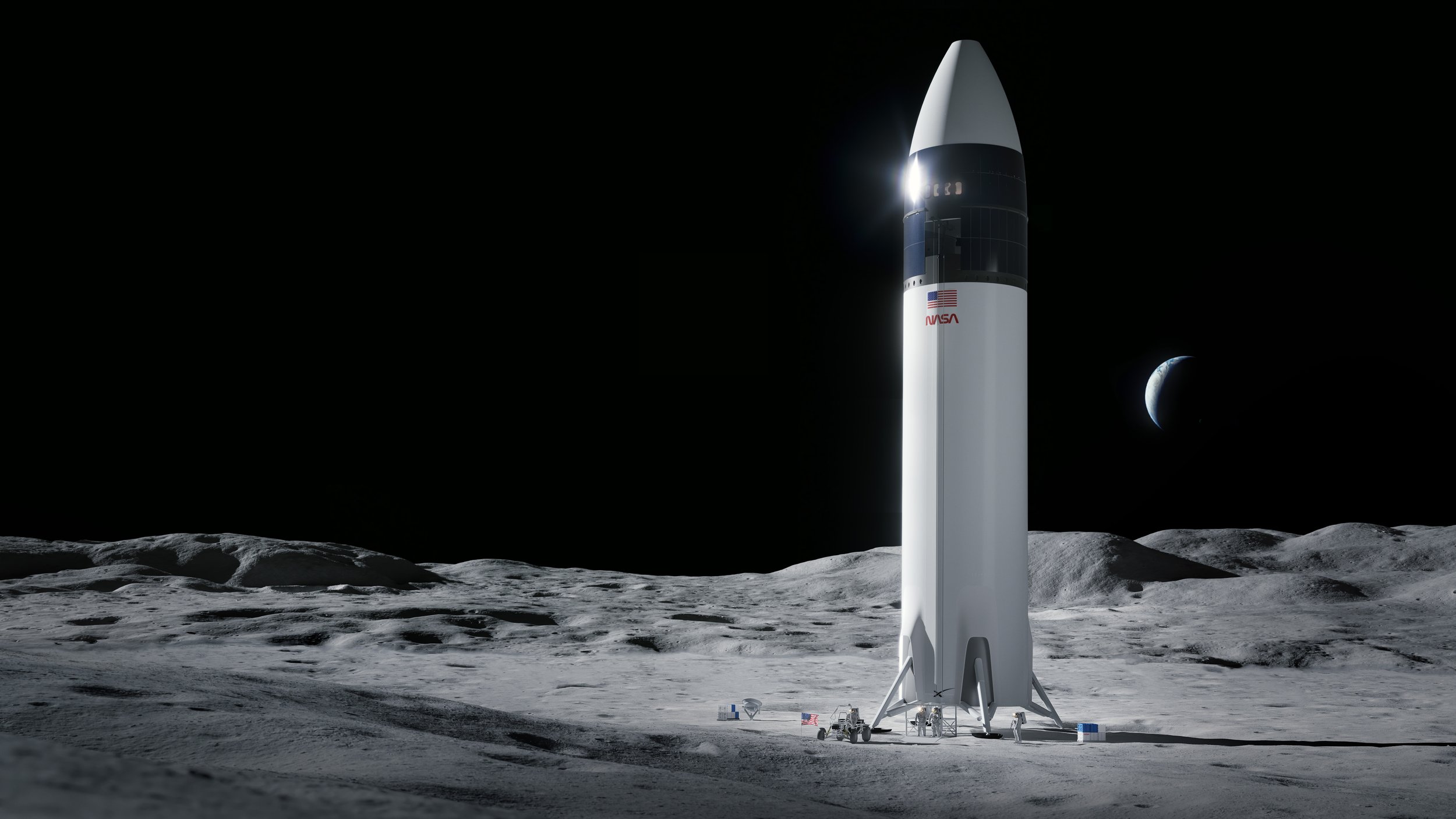NASA and SpaceX Moon Partnership Paves the Way to Mars
Illustration of SpaceX’s Starship lunar lander, which will return astronauts to the Moon. (Credit: SpaceX)
NASA’s Artemis program, which aims to take humanity back to the Moon in preparation for sending astronauts to Mars, has just cleared a major hurdle. On November 4, after months of protests by competitor Blue Origin, a federal judge upheld NASA's selection of SpaceX to develop a Human Landing System that will return US astronauts to the Moon. The vehicle NASA selected—a specialized version of SpaceX’s Starship rocket—will not only return humanity to the lunar surface for the first time in over 50 years, it will pave the way for our next giant leap: living on Mars.
SpaceX has been privately developing Starship for several years and is making rapid progress. The company has conducted five high-altitude test flights with full-scale prototypes since the summer of 2020. The rocket has an ambitious design that combines a number of world-firsts, enabling unprecedented access to the solar system if successful. At the heart of the challenge is reusability: creating a rocket that can not only be reused after it’s flown to space, but reused quickly, without lengthy and expensive checkouts and refurbishments. If rockets can be fully reused, they become massively more capable and affordable to operate, allowing costs to be reduced from the perennially high levels which have so far served as barriers to human spaceflight.
Reusability is hardly the only intended innovation of this Human Landing System design. Several other challenging features have yet to be resolved, including refueling while in orbit and landing a very large vehicle on the lunar surface—Starship stands 50 meters tall. SpaceX has conducted flight and landing tests of Starship prototypes in an effort to replicate the trial-and-error success of its Falcon 9 landing program, which led to the successful landing of a Starship prototype for the first time on May 5. SpaceX will not be able to start orbital refueling tests until the Super Heavy booster is ready to deliver Starships to orbit, which the company hopes to achieve by the end of this year pending final launch approval from the FAA.
Crucially, these challenges standing between us and the Moon are some of the same obstacles standing in the way of a human mission to Mars. To get Starship to Mars, it will have to be launched to Earth orbit, refueled while it’s there, and then sent off to propulsively land on the red planet—a mission profile similar to that of landing on the Moon. By working with SpaceX to solve these problems and integrate the solutions into a lunar lander, NASA is essentially investing in both the Moon and Mars at once.
The contract includes an uncrewed test mission and a crewed lunar landing and return mission set to launch as soon as 2025. By the time this contract is fulfilled NASA will have the immediate capability to ferry crew and cargo between Earth and the Moon. But the agency will also, for the first time, have an interplanetary vehicle architecture that has been developed, tested, and crew-certified, and can be modified to be sent to Mars.
With a basic vehicle design already in use and a significant number of challenging technical problems solved, NASA will be able to shift its focus quickly from the Moon to Mars and save significantly on development costs.
There will still be difficult work required. For one, the ship will have to be fitted for a longer voyage—months instead of days—which will require robust life support and radiation protection systems. Mars is hundreds of times further than the Moon, and astronauts aboard Starship will be exposed to high radiation levels throughout the
interplanetary trip, which could cause cancer if left uncontrolled. The ship will also need to cycle a limited supply of oxygen to keep the crew alive potentially for years at a time, a problem to which NASA’s extensive life support experience on the International Space Station will undoubtedly apply.
The entry, descent, and landing sequence will also have to be tuned to Mars’ terrain and atmosphere, which will likely require both software and hardware changes. But rather than having to start from scratch, designing or commissioning a vehicle and its production and launch facilities, SpaceX will be able to provide NASA with a workable
option that was designed with Mars in mind in the first place. Not only will this be the closest any nation has ever been to actually settling the red planet, but NASA will have gotten to this point without earmarking a single dollar for Mars lander development.
As NASA’s space exploration programs face budget uncertainty and increasing competition from abroad, it is increasingly likely that the US will soon find itself in a race with China and other nations to establish a human presence on Mars. As the only vehicle designed to carry crew to Mars currently under serious development, Starship’s accelerated progress is hard to ignore, and could represent a significant advantage for NASA and its international partners. By investing in Starship to go to the Moon, NASA is effectively fast-tracking its Mars program and positioning the US to lead space exploration for years to come.
Steve Mallen is a junior in Georgetown College studying Government. He is interested in the commercial space sector’s efforts to disrupt space exploration, infrastructure, and Earth science.

